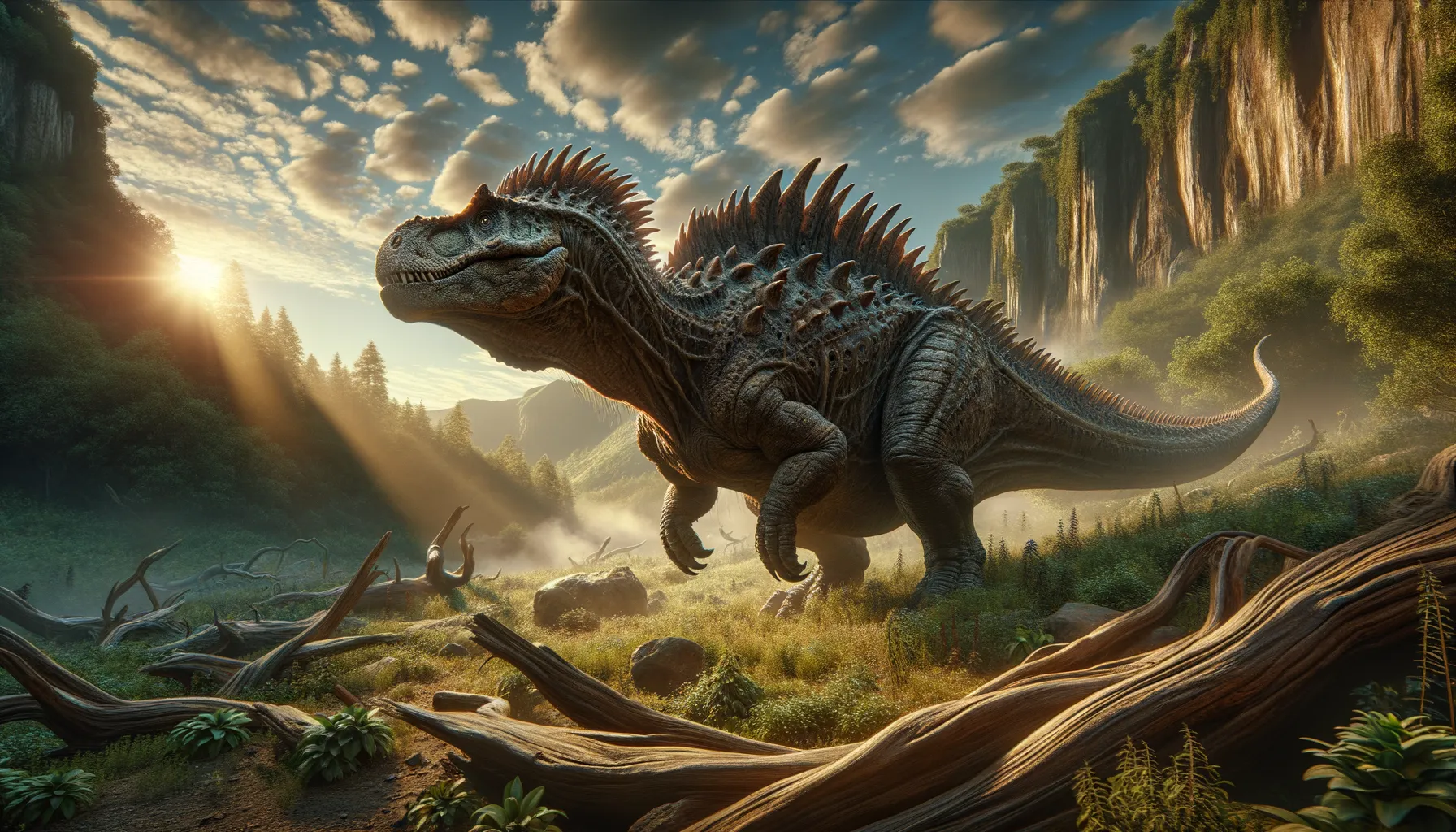
Gargoyleosaurus
Armored and ancient: a Jurassic survivor!
Period
Jurassic
Length
Around 3 meters long.
Height
About 1 meter tall at the shoulder.
Weight
Approximately 1 ton.
Gargoyleosaurus was a heavily armored dinosaur known as an ankylosaur, which roamed the Earth during the Late Jurassic period. Its body was covered with bony plates and spikes, offering protection from predators. Despite its fearsome appearance, this herbivore fed primarily on low-lying plants. The discovery of Gargoyleosaurus has provided significant insights into the evolution and diversity of ankylosaurs.
Diet
Gargoyleosaurus was a herbivore that primarily fed on low-lying plants, possibly including ferns and cycads. Its wide, beaked mouth allowed it to efficiently strip vegetation.
Hunting
As a herbivore, Gargoyleosaurus did not hunt other animals. Instead, it likely focused on foraging for plants, moving slowly through its environment while feeding on available vegetation.
Environmental challenges
Living during the Late Jurassic, Gargoyleosaurus faced challenges such as fluctuating climates and the presence of large predators. Despite these threats, its armored body provided a form of defense. Additionally, competition for plant resources was significant, forcing this species to adapt to different types of vegetation available in its territory.
Speed
Relatively slow due to its heavy armor.
Lifespan
Estimated to be around 20-30 years.
First discovery
Discovered in Wyoming, USA, in 1995.
Fun Facts
- Gargoyleosaurus is one of the earliest known ankylosaurs, a group of armored dinosaurs.
- This dinosaur lived around 154 to 150 million years ago during the Late Jurassic period.
- Gargoyleosaurus was discovered in Wyoming, USA, in 1995 and later named due to its bumpy, gargoyle-like appearance.
- It was a herbivore, feeding on plants with its small teeth and possibly using its beak-like mouth to help strip foliage.
- Gargoyleosaurus had a blend of both ankylosaur and stegosaur traits, showcasing the diversity of prehistoric armored dinosaurs.
- Its armor included bony plates and spikes that provided protection against predators like Allosaurus.
- Despite its heavy armor, Gargoyleosaurus was relatively small for an armored dinosaur, measuring about 3 to 4 meters long.
Growth and Development
Gargoyleosaurus may have experienced relatively slow growth compared to some other dinosaur species, with its energy invested heavily in developing its protective armor. As it matured, its body and armor would have become more robust, offering increased defense against predators. Young Gargoyleosaurs probably stayed close to adults for protection as they grew into their own.
Habitat
This dinosaur inhabited regions that are now part of North America, specifically areas with abundant vegetation like forests and floodplains. It preferred environments where it could easily find food and water. Seasonal changes in these habitats likely affected the availability of food sources, requiring some degree of migration or adaptability.
Interaction with other species
Gargoyleosaurus coexisted with various other dinosaur species, including predators such as Allosaurus. Its interactions with these carnivores were likely limited to avoiding predation. Coexistence with other herbivores resulted in competition for resources but also might have offered mutual benefits in terms of protection and foraging opportunities.
Natural lifespan
Gargoyleosaurus might have lived naturally for up to 30 years.
Reproduction
Gargoyleosaurus is believed to have laid eggs, similar to other dinosaurs of its time. Mating rituals and nesting behaviors remain unclear, but egg-laying likely occurred in secure, secluded areas. Protective instincts towards their nests may have been common among females.
Social behaviour
Little is known about the social behavior of Gargoyleosaurus, but it may have lived alone or in small groups. The need for protection likely encouraged some level of social interaction, whether in small herds or familial groups, to enhance survival against predators.
Fossil locations
Fossils of Gargoyleosaurus have primarily been found in the Morrison Formation in Wyoming, USA. These findings have contributed significantly to understanding the diversity of ankylosaurs and their evolution during the Jurassic period. The fossils also offer insights into the environment the Gargoyleosaurus once inhabited.
